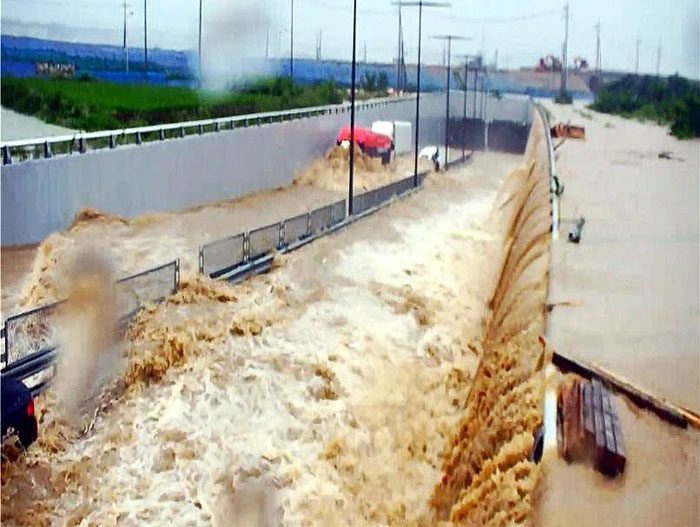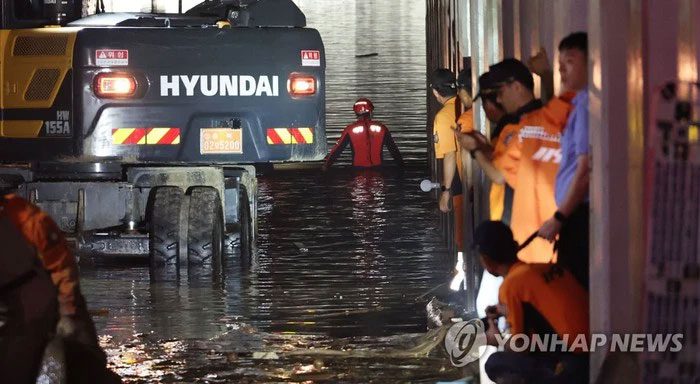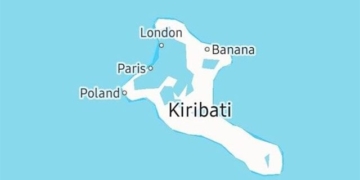According to Yonhap News Agency (South Korea), at least 13 people lost their lives in a tunnel in Osong when water surged in, submerging many vehicles in the tunnel.
“Water Bomb” of 60,000 Tons Falls Like a Waterfall

Rushing water flooded the tunnel.
At 8:40 AM on July 15, while passing through the Gungpyeong Tunnel in Osong, Cheongju City, North Chungcheong Province, an individual named A. encountered a dangerous situation.
“As I entered the tunnel, water began to rush in, and by the time I was exiting, the wheels were completely submerged. I managed to escape and saw in the rearview mirror that water was pouring into the tunnel like a waterfall,” A. told Yonhap. “Even now, thinking back on the incident still leaves me feeling dizzy.”
Many drivers who experienced the incident shared on social media that they felt like they had narrowly escaped from a “death tunnel.”
From July 13 to 17, heavy rainfall with record amounts reaching up to 570 mm fell in various regions of South Korea.
On July 15, the Miho River overflowed due to heavy rain, breaching its banks and flooding the tunnel in Osong, isolating dozens of vehicles and passengers.

As of the morning of July 17, the water level in the tunnel remained high, reaching waist level for adults. (Photo: Yonhap News Agency)
According to Yonhap, when the embankment near the Mihocheongyo Bridge was washed away, water from the river immediately poured into the tunnel. The 430-meter-long tunnel was flooded with 60,000 tons of water within 2-3 minutes.
Although there were water pumps in the tunnel, it seemed that the electrical technical room was also flooded, rendering them nearly useless.
Some people in the stranded vehicles attempted to escape, but many were trapped inside, unable to move in the rising water.
At least one victim climbed onto the roof of a car but was swept away by the rising waves.
B, a passenger rescued from the accident scene, stated: “I was extremely scared as a huge amount of water suddenly rushed into the tunnel.”
Initial Rescue Efforts Face Challenges
Reports indicate that 13 bodies have been retrieved from the tunnel, but rescue operations faced numerous difficulties due to heavy rain and mud that had accumulated in the tunnel.
Initially, rescue teams could not deploy divers due to the tunnel being filled with mud and the river water continuing to surge in from the collapsed embankment.
Once the embankment was repaired and the rain subsided, there was finally enough space at the top of the tunnel for rescue boats to enter. It was not until 5:55 AM on July 16, 21 hours after the accident occurred, that four divers were able to begin their search.
- A local fire department official stated: “Due to forecasts of heavy rain until the 18th, we will complete the search by mobilizing all equipment, including water pumps.”
- Differences Between El Niño, La Niña, and ENSO
- Climate Change Underground Damaging Infrastructure
- World Breaks Heat Records Three Times in Just Four Days



















































